Leaf painting, also known as leaf carving, originated in the Zhou Dynasty and flourished during the Tang and Song Dynasties. It uses the natural form of leaves and cleverly utilizes their natural veins to create stunning works of art.
The work is delicate like a cicada's wings, with natural colors that transform decay into magical beauty. However, due to its difficulty in preservation, many exquisite pieces have been lost over time causing this craft to nearly fall into oblivion.
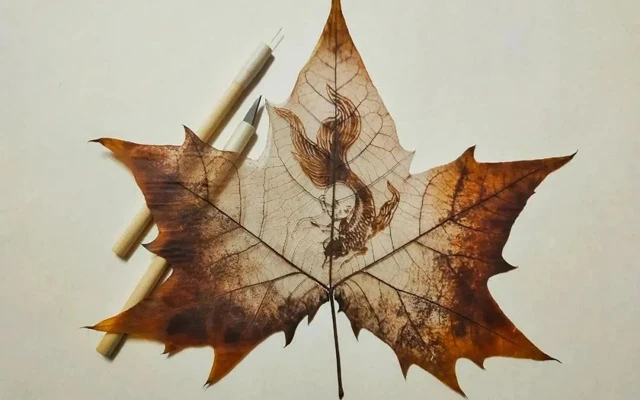
Last August though Ding Li's leaf painting artwork series depicting "Along the River During the Qingming Festival" went viral bringing this ancient yet captivating technique back into public view.
Ding Li hails from Xianyang City in Hubei Province and has loved painting since he was five years old experimenting with sketching, watercolor painting, and oil paintings while also dabbling in woodcarving, bamboo-carving, stone-carving, nuclear carving etc., all out of pure interest for these different forms of artistry.
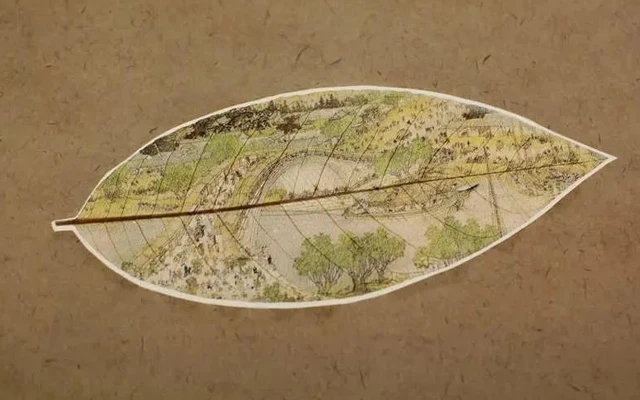
At thirteen years old he attended an art exhibition where he saw an elderly man using small knives to carve on leaves; fascinated by what seemed like magic he watched him work for almost two hours before being asked if he wanted to learn too. Ding eagerly nodded his head accepting becoming the elder’s apprentice right then and there without hesitation.
Later on when Ding Li met Master Wu Guanzhong at fifteen years old who taught him that young people should not always follow traditional paths but instead inherit them first and then innovate constantly breaking through barriers along the way, words which stuck with him throughout his journey even though it was difficult at times.
Every single leaf vein captures the traces of life's growth. The beauty of leaf veins lies in how they support a species' entire lifecycle through their interconnectedness.
One leaf, one painting, crafted with masterful skill. Ordinary sparse tree leaves can be transformed into an artwork that is imbued with natural and vitalistic energy under the hands of skilled artisans who turn fallen leaves into kindred spirits while transforming decay into magical beauty.
Leaf paintings use leaves as carriers to carve patterns onto their surface by utilizing their interwoven veins to create works of art, the texture of which remains true to the original pattern, but where craftsmen repair and recreate what was there before on top this natural charm giving it new life once again.
The entire scroll of "Along the River During Qingming Festival" is 1191.5cm long. Ding Li has reproduced this classic ancient painting onto the thin, cicada-like leaves, and the work has amazed everyone. These tiny little pieces bear not only mountains and rivers but also portray countless living beings’ appearances in such detail it takes one’s breath away.
Through Ding Li's recreated version many people have come to learn about this traditional handicraft for the first time, realizing its unique allure through his lifelike depictions capturing a strong sense of everyday life within them; transporting viewers back effortlessly over centuries showcasing China at her finest moments throughout history.
Leaf painting emphasizes the richness and artistry of the image while enhancing its aesthetic appeal. However, creating a leaf painting is an arduous process. First, one must venture deep into the mountains in search of sacred fig, firmiana simplex, or yulan magnolia with leaves that have grown for at least five months without becoming brittle or damaged by insects. The ideal ratio is 5:5.
After selecting suitable leaves based on these criteria, they undergo over sixty steps including pruning, soaking hammering pressure-carving polishing before becoming eligible as materials for use in creating a stunningly delicate piece.
Ding Li deliberately studied ancient tattoo methods and after mastering them on animal hides and paper he applied them to leaves. Initially shocked by how easily colors bled out from his attempts which led him to years spent experimenting with various techniques until finally discovered wax dyeing which allowed him to fixate color pigment onto their surface effectively solving issues related to fading pigments/decay, ultimately resulting in a significant breakthrough within aesthetics concepts traditional craftsmanship as well as preservation techniques using foliage.
Despite this laborious manufacturing process though; Ding Li's finished product possesses a double-sided embroidery-like texture so intricate it can be mistaken for oil paintings or embroidery pieces if not closely observed.
Traditional leaf painting emphasizes craftsmanship, requiring the use of multiple techniques such as painting, rendering, micro-carving, paper cutting, and calligraphy to create a complete piece.
However, Ding Li's focus lies more on the richness and artistry of the image itself. He employs various forms of artistic expression such as the Gongbi (meticulous) painting style using mineral pigments with silver needles or watercolors combined with ink and oil paints while utilizing new techniques to develop intricate details within each vein.
Due to the extended periods spent creating these works; his hands bear numerous scars from cuts made during production. When reproducing Zhang Zeduan’s masterpiece “Along the River During Qingming Festival,” he paints over a million needles throughout more than one year of work, spending thousands of leaves before finally completing his work: a set consisting of ten white magnolia leaves portraying this famous piece.
Many people have come seeking out Ding Li's artwork, willing to pay top dollar however he refused all requests saying that unless someone truly cherishes it enough to preserve it properly he would rather donate them directly to museum.
For over a decade, Ding Li has developed his own unique style of leaf carving techniques including leaves vein needle painting, leaves vein shading painting, and leaves vein ink dyeing painting. To raise awareness for this art form he has held numerous exhibitions throughout schools and universities.
Ancient Chinese craft should not be left forgotten or lost to time. Through years of hard work and dedication honing his artistic abilities; Ding Li continues to strive towards preserving this craft.
One leaf becomes a canvas for an intricate masterpiece crafted through divine inspiration. Breathing new life into faded foliage imbuing them with renewed spirit. Leaf carving isn't just a skill but rather embodies the heart and soul passed down from generations of skilled artisans who have kept this ancient practice alive.
Just as fallen petals are not without purpose turning into nourishment for future growth; so too can fallen leaves be collected endlessly inspiring new works that blossom into beautiful pieces of art. Through delicate carvings on these fragile leaves utilizing their veins interwoven lines; artists create vivid depictions that bring these once-silent souls back to life again.
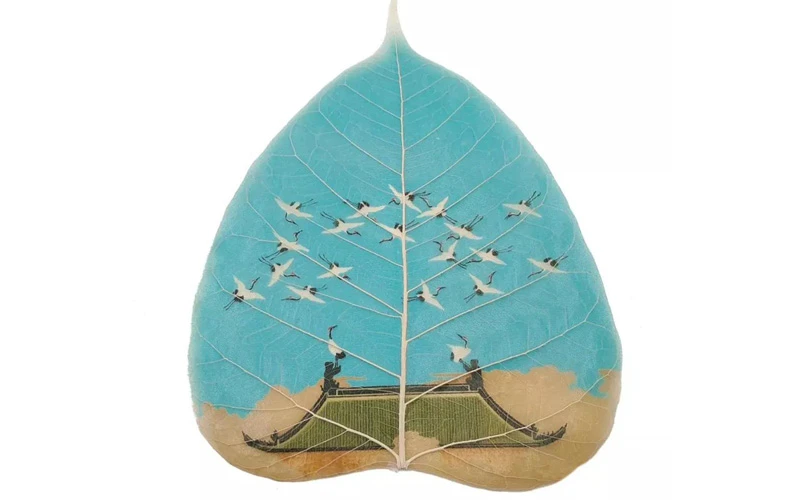
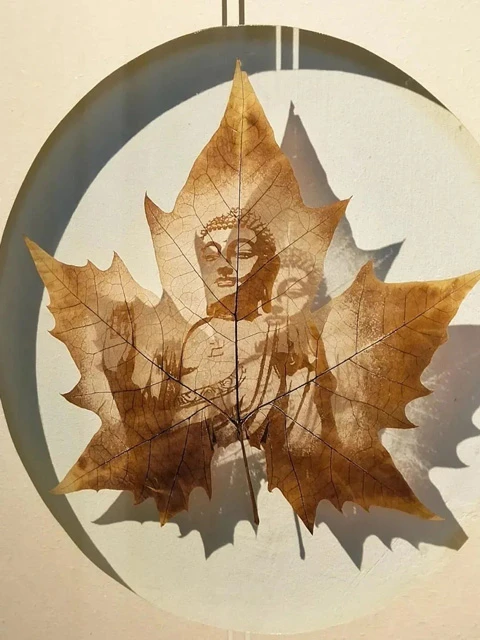
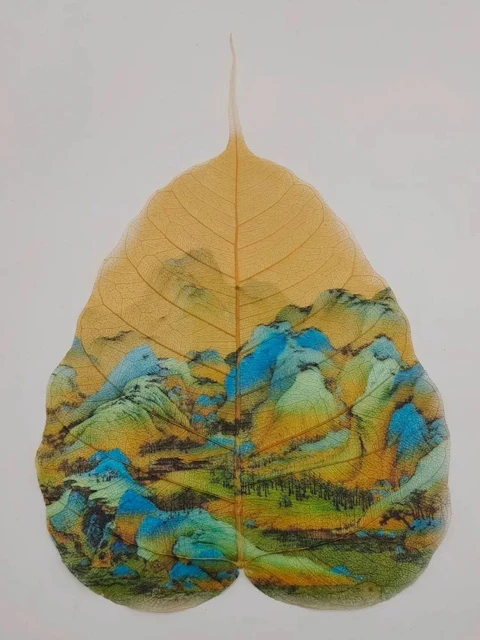
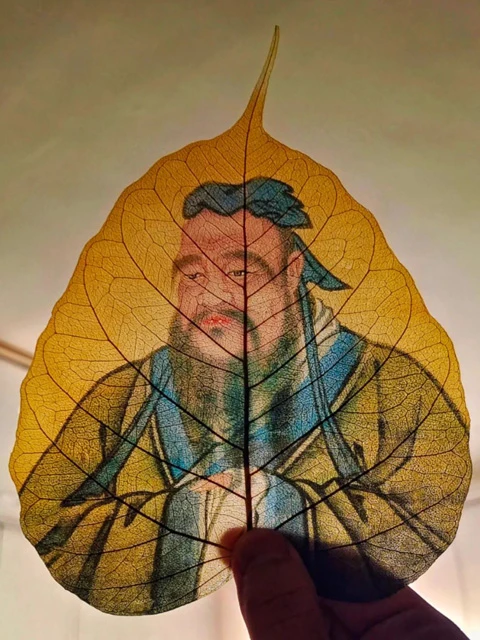

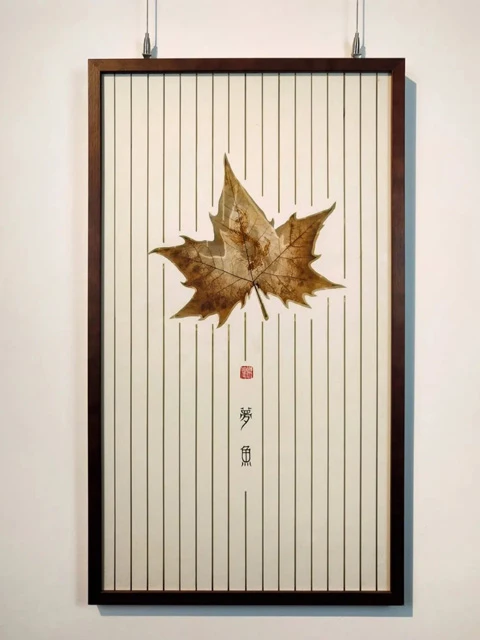
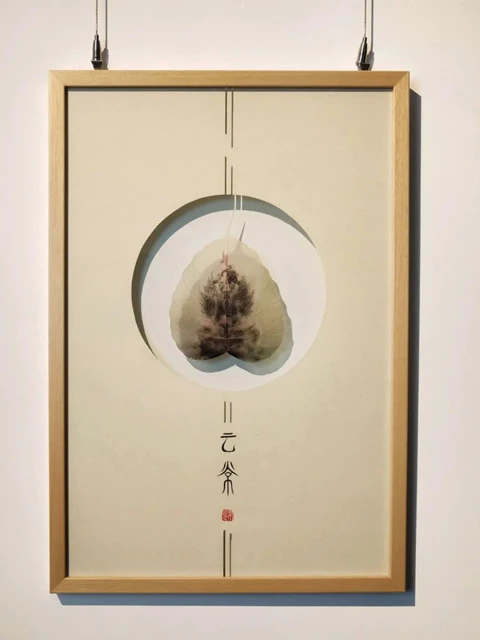
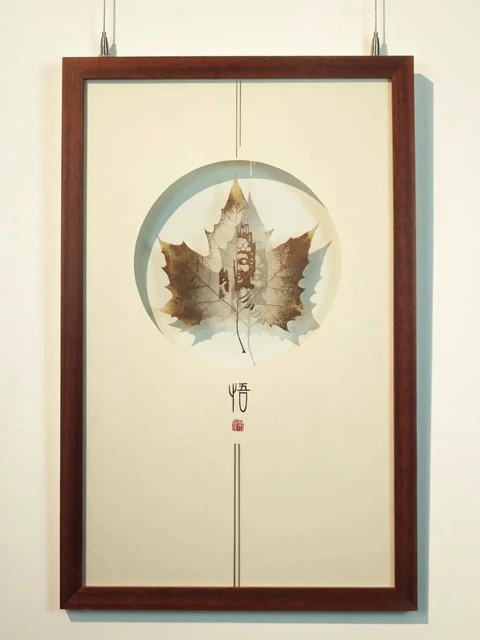
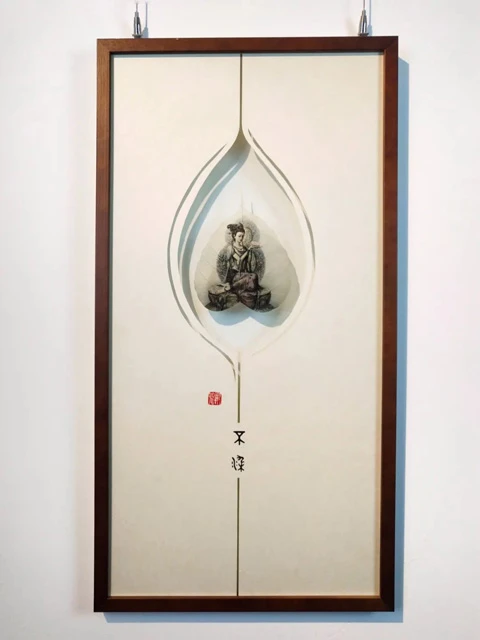


That’s gorgeous. I think the impermanence of it all is poetic too. Just like the leaves’ colors change and then fade, these paintings too eventually disappear into the earth
Should that be seed carving, perhaps?
Nuclear carving???